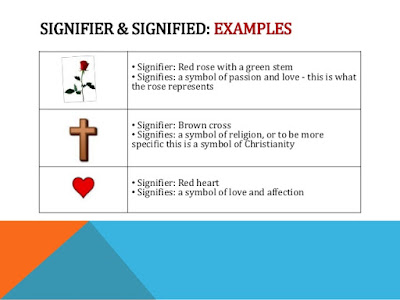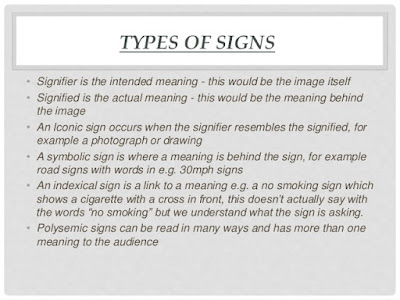SOCIAL SECURITY
Social security is the protection which society provides
for its members through a series of public measures. It is against economic and
social distress.
It could be caused by the stoppage of substantial
prediction of earning resulting from sickness, maternity, unemployment, old
age, etc.
The main feature of social security are:
To solve the problems of insecurity
To protect the workers from various contingencies of life
It is a collective effort of employee, employer and
government
It is an idea to provide social justice.
The Workmen’s Compensation Act, 1923
This is one of the important social security legislations.
It aims to provide financial protection to workmen and their dependents in case
of accidental injury by means of payment of compensation by the employees.
The workmen’s compensation supports dependents like widows,
minor legitimate or adopted son and unmarried daughter.
It considers for the disability of the workers to be total
where if in capabilities a worker for all work he was capable of doing at the
time of the accident resulting in such disablement.
Employee’s State Insurance Act, 1948
Provide medical facility and unemployment insurance to
industrial workers during their sickness.
It is compulsory and contributory in nature.
It is applicable to all factories that employ more than 20
workers. It has the benefits of medical, sickness, maternity, disabled and
dependent benefits.
Maternity Act, 1961
It is to protect the dignity of motherhood by providing
complete and health care to woman and her child.
It gives her the assurance that her rights will be looked
after while she is at home to care for her child.
Provisions of the Act entitle maternity leave even to women
engaged on casual basis or on muster role basis on daily wages.
Cash benefits will be 84 days leave with pay before/after
delivery.
A medical bonus of Rs. 1000/-
An additional leave will pay upto one month (proof of
illness required)
Payment of Gratuity Act, 1972
The Payment of Gratuity Act, 1972 applies to factories and
other establishments employing more than ten or more persons.
Every factory, mine, oil field, port and Railway Company.
Employee means any person employed on wages in an
establishment to do any skilled, semi skilled, unskilled, supervisory, etc.
According to Sec.4(1) of the Payment of Gratuity Act, 1972,
gratuity is paid after termination of employee after rending continuous service
not less than 5 years on his superannuation or his retirement or resignation or
on his death or disablement due to accident or disease.
Gratuity = Monthly salary X 15 days X no. of years of
service/26
The Employee’s Provident Fund and Miscellaneous Provisions
Act, 1952
The institutions should compulsory contribute provident
funds, pension and insurance for employees i.e.
a. Employee’s
Provident Funds Scheme, 1952
b. Employee’s
Deposit Linked Insurance Scheme 1976
c. Employee’s
Pension Scheme, 1995.
It is to extend the reach and quality of publicly managed
old age income security programs.
Eligible for provident fund in for an employee of the
company to whom the employee’s basic salary and DA should be more than Rs.
15,000/-
Employee’s deposit linked insurance is basically a ‘Life
Insurance’ for all covered employees under EPF MP Act, 1952.
Here deposit means average deposit in EPF A/c. when an
employee dies while in service his or her family will get some compensation
based on deposit in EPF Account.
On behalf fo Employees, the employer has to pay @0.50% of
(basic+DA) or more upto Rs.15,000/- as
its monthly contribution with total contribution which makes eligible
employee’s nominee to get the claim in the case of death while in service.
The amount received as the employer’s contribution and also
the Central Government’s contribution to the ‘Insurance Fund’ under sub-section
2 and 3 of Sec. 6C shall be credited to an account called the ‘Deposit-Linked
Insurance Fund Account’.
Social security benefits and welfare measures
Medical care or sickness benefit scheme
Employment injury benefit scheme
Maternity benefit scheme
Old age benefit including pension
Housing schemes
Educational schemes
Integrated insurance schemes
Survivor’s benefit scheme, etc.
TYPES OF RISK
Pure risk: Pure risk is a
situation that holds out only the possibility of loss or no loss. For e.g. if
you leave your house in the morning and leave for office by motorcycle you
cannot be sure whether or not you will be involved in an accident, that you are
running a risk. There is the uncertainty of loss. If you are involved in any
one of these situations, you will suffer loss.
Types of pure risks:
Personal risk: Is
the risk which affects an individual directly. It involves the likelihood of
sudden and complete loss of income or assets or gradual reduction of income.
This risk can be classified into four main types:
Risk of Premature death: It is generally believed that the
average life span of human beings is 70 years. Anybody who dies before 70 years
could be regarded as having died prematurely. A family breadwinner who dies
prematurely has children to educate, dependents to support, mortgage loan to
pay, etc.
Risk of old age: Post
retirement, older people do not get sufficient income to meet one’s financial
needs. Even some of the workers who plan for the future and make sufficient
savings for old age may face the effect of inflation on savings. Higher rate of
inflation can cause great financial and economic distress to retired people as
it may reduce their real incomes.
Risk of poor health: Poor
health can bring serious financial and economic distress to an individual. Without
good health, nobody can plan for their future savings and can’t maximise their
economic income. Poor health resulst in loss of earned income and high medical
expenses.
Risk of unemployment:
Unemployment is a situation where a person who is willing to do and is looking
for work to do cannot find work to do. It always brings financial insecurity to
people. In these cases, the person would lose his/her earned income. He may
suffer from financial hardships. It may fully deplete his savings and expose
himself to financial insecurity.
Speculative risk: is a risk where both profit and loss are
possible. It is not normally insurable. It is common in business undertakings.
It is a risk which faces break-even situations. For e.g. it includes taking
part in exporting to a new market, betting on horse races, etc.
Property risk:
Property owners face the risk of having their property stolen, damaged or
destroyed by various causes. A property may suffer direct loss, indirect loss,
losses arising from extra expenses of maintaining the property or losses
brought about by natural disasters.
Natural disasters such as floods, earthquakes, storms,
fire, etc. bring enormous property losses as well as affect human lives.
Liability risk:
means that the person will be responsible for an injury to another person or
their property. For e.g. if you injure your neighbor or damage his/her
property, the law would impose fines on you and you may have to pay heavy
damages. The risk amount under this risk doesn’t have any maximum upper limit.
For e.g. If you ride a motorcycle valued Rs. 50,000 and negligently cause
serious bodily harm to another person, that person can sue you for any amount
of money… Rs. 70,000 and above, depending on the nature of the injury. If the
motorcycle is fully damage by you then you are supposed to pay the actual value
of the motorcycle. In this case your financial and economic security will be
greatly endangered.
Fundamental risk: is a
risk which is non discriminatory in its attack and effect a group risk cause by
bad economy, inflation, unemployment, war, political instability, flood,
drought, earthquake, etc.
This affects a large population and the risk lies with the
society rather than the insurance. This can be handled by social insurance.
Particular Risk:
affect only the individual and not everybody in the community. For e.g. if a
bicycle is stolen the full impact of the loss of the bicycle is felt by you.
The theft of a bicycle is a particular risk. Particular risks are the
individual’s own responsibility and not that of the society of community as a
whole. The best way to handle particular risk by the individual is the purchase
of insurance cover.
Static risk: is a risk that
involves losses brought by irregular action of nature of mistakes of man. It is
an unchanging economy. For e.g. if all economic variables remain constant, some
people with fraudulent tendencies would still go out, steal, abuse their
positions, etc. it involves destruction of assets or change in their possession
as a result of dishonesty. Example of static risk includes theft and bad
weather.
Dynamic risk: is mainly speculative
risk in changes in price level, income, taste of consumers, technology, etc.
which can bring about financial losses to members of the economy. It is
beneficial to the society. For e.g. technological changes which brings higher
production at a cheaper price. It affects large number of individuals.







